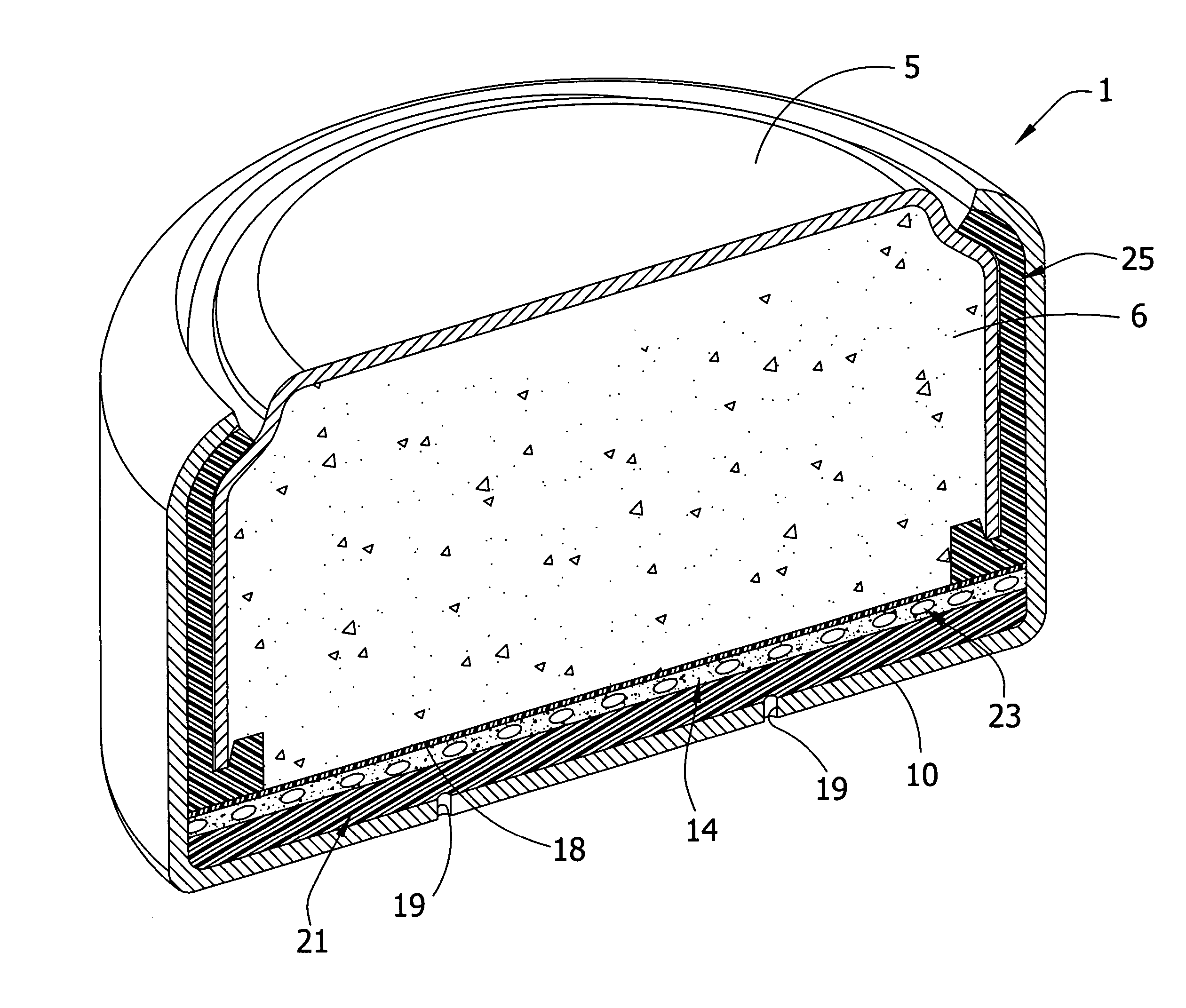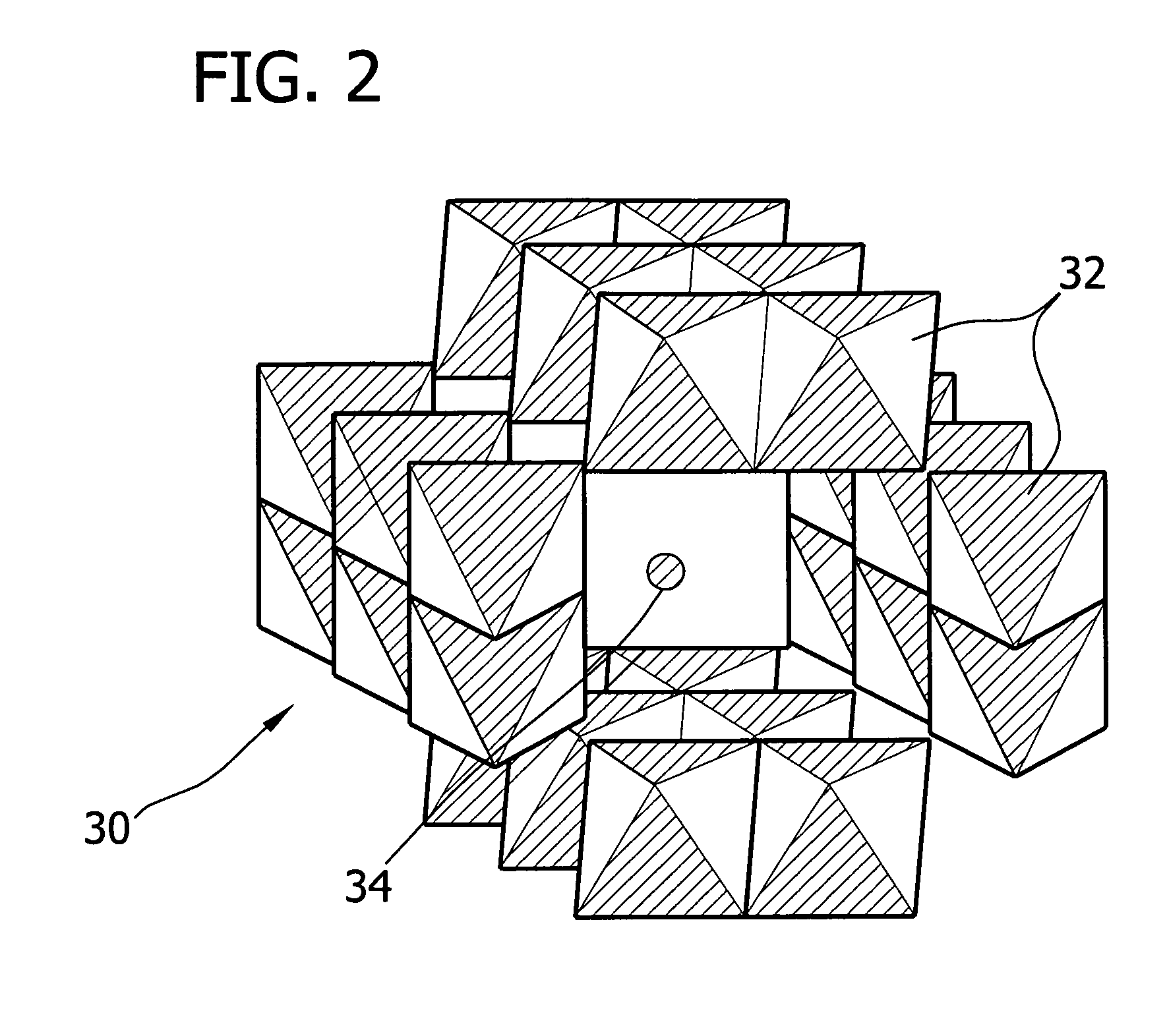Novel metal air cathode: manganese oxide contained in octahedral molecular sieve
a metal air cathode and manganese oxide technology, applied in the field of electrochemical cells, can solve the problems of limited catalytic activity, limit the use of high-power applications of high-power metal air cells, and reduce the voltage produced by conventional metal air cells, so as to achieve efficient decomposition of peroxides, high-power cathodes, and high power output.
- Summary
- Abstract
- Description
- Claims
- Application Information
AI Technical Summary
Benefits of technology
Problems solved by technology
Method used
Image
Examples
example 1
Synthesis of Cryptomelane
[0072] To prepare cryptomelane, manganese sulfate monohydrate (MnSO4.H2O; 88 g; available from Alfa / Aesar, Ward Hill, Mass.) was stirred into a nitric acid solution that had been prepared by mixing concentrated nitric acid (30 mL) with deionized water (300 mL). The resulting acidic Mn salt solution was constantly stirred with a magnetic stir bar.
[0073] The temperature of the solution was raised to 60□C, and an aqueous solution containing 5.89% by weight potassium permanganate (1000 g) was slowly added with constant stirring (KMnO4 from Alfa / Aesar, Ward Hill, Mass.). The redox reaction between Mn2+ from MnSO4 and Mn7+ from KMnO4 resulted in the formation of a brownish-black precipitate. The slurry was stirred at 60° C. for four hours. Finally, the cryptomelane product was isolated by filtration under vacuum and washing with distilled water (500 mL).
example 2
X-Ray Diffraction Characterization of Cryptomelane
[0074] To determine whether the synthesis successfully yielded cryptomelane, samples of the material prepared according to the method of Example 1 were heat treated and prepared for X-ray diffraction analysis. A first sample was heat-treated at 300° C. and loaded onto a powder sample holder for an X-ray diffractometer and subjected to X-ray diffraction analysis. A second sample was heat-treated at 95° C. and loaded onto a powder sample holder for an X-ray diffractometer and subjected to X-ray diffraction analysis. X-ray diffraction confirmed that the resultant material had cryptomelane structure. See FIG. 4 for X-ray diffraction patterns of cryptomelanes heat treated at 300° C. 68 and heat treated at 95° C. 70 compared against standard cryptomelane-M-K2-xMn8O16 (44-1386). Approximate values for the major peak positions for the sample heat treated at 300° C. are presented in Table 1 below. The exact numerical values obtained by X-ray...
example 3
Nickel-Exchanged Cryptomelane
[0076] Exchange of potassium ions residing within the cryptomelane tunnels with nickel ions was performed by suspending a sample of the solid material prepared according to the method of Example 1 in 0.1M NiNO3 solution (1 Liter) available from Alfa / Aesar, Ward Hill, Mass. The resultant nickel-exchanged cryptomelane was filtered under vacuum and washed with distilled water (1000 mL).
[0077] Alternatively, the exchange of potassium ions with nickel ions was carried out by passing 0.1M NiNO3 solution through a fixed bed comprising particulate cryptomelane prepared according to the method of Example 1. For example, a sample of the precipitate prepared according to the method of Example 1 was recovered by filtration and the NiNO3 solution passed through the solid filter cake under vacuum filtration. The sample was heat treated at 300° C. and prepared for X-ray diffraction analysis. Referring now to FIG. 5, an X-ray diffraction pattern of nickel-exchanged cr...
PUM
| Property | Measurement | Unit |
|---|---|---|
| temperature | aaaaa | aaaaa |
| temperature | aaaaa | aaaaa |
| mean particle size | aaaaa | aaaaa |
Abstract
Description
Claims
Application Information
 Login to View More
Login to View More - R&D
- Intellectual Property
- Life Sciences
- Materials
- Tech Scout
- Unparalleled Data Quality
- Higher Quality Content
- 60% Fewer Hallucinations
Browse by: Latest US Patents, China's latest patents, Technical Efficacy Thesaurus, Application Domain, Technology Topic, Popular Technical Reports.
© 2025 PatSnap. All rights reserved.Legal|Privacy policy|Modern Slavery Act Transparency Statement|Sitemap|About US| Contact US: help@patsnap.com



